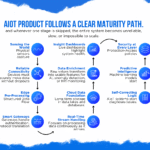HUD For Bike Helmet
- Home
- portfolio
- AI/ML Engineer
- Computer Vision Solutions
- HUD For Bike Helmet
01. Helmet HUD System Using Raspberry Pi 4 & Android Auto
This project focused on building a smart Heads-Up Display (HUD) for bike helmets, designed to improve rider safety and convenience by bringing mobile functionality directly into the helmet. At the core of the system is a Raspberry Pi 4 running Linux, which serves as the central controller, enabling BLE/Wi-Fi connectivity and Android Auto integration to display real-time mobile content on a compact in-helmet screen.
02. The Challenges & Solutions
Controller: Raspberry Pi 4 for system processing and display management
OS: Linux OS with custom Android Auto SDK integration
Connectivity: BLE & Wi-Fi for mobile device pairing and data exchange
Display: Compact, high-contrast screen embedded in the helmet visor
Power Supply: On-board rechargeable power bank for portable use
User Experience: Display of navigation, notifications, and media via Android Auto
Enclosure: Lightweight design with vibration and temperature resistance
03. Working Process
Enhancing Road Safety Through Smart Display Tech
The vision for this project was to empower bikers with a non-distracting interface that keeps essential mobile information directly in the rider’s field of view—reducing the need to look down at phones or navigation screens.
System Integration and Setup
My key responsibility in the project was to establish the Linux-based system environment on the Raspberry Pi 4, and to successfully integrate the Android Auto SDK, transforming the Pi into a functional HUD controller. This included managing hardware interfacing, optimizing display output, and ensuring stable BLE/Wi-Fi communication with Android devices.
Android Auto for Seamless User Experience
With Android Auto successfully integrated, the HUD allows riders to:
View real-time navigation and route updates
See incoming calls and messages
Control media playback via voice or touch
All displayed on a compact, high-contrast screen embedded in the helmet’s visor area—designed to be visible in various lighting conditions without obstructing the rider’s vision.
Future Scope
The system is modular and can be extended with additional features such as voice commands, camera recording, and smart alerts—making it an excellent base for future smart helmet platforms.


